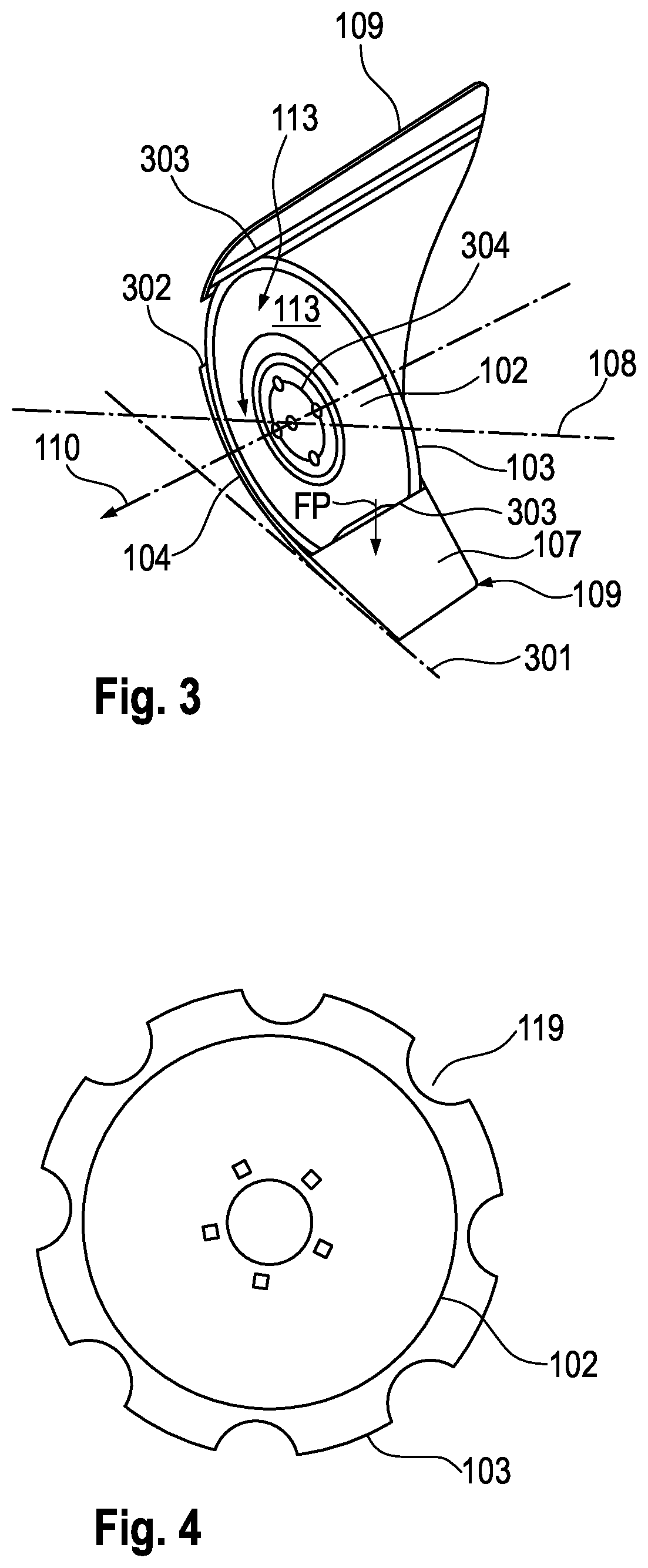Method for plowing ground with a plough device comprising two cutting elements
a technology of cutting elements and ploughing equipment, which is applied in soil-working methods, agricultural tools and machines, and soil-replenishing methods. it can solve the problems of high tractive force, particularly significant subprocessing effort, and high force required for holding the plow in the ploughing direction, so as to reduce the need for tractive force and reduce the need for plows. the effect of plows
- Summary
- Abstract
- Description
- Claims
- Application Information
AI Technical Summary
Benefits of technology
Problems solved by technology
Method used
Image
Examples
Embodiment Construction
[0116]The same or similar components in different figures are provided with the same reference signs. The drawings in the figures are schematic.
[0117]FIG. 1 shows a plow device 100 for plowing ground 120. A rotatable first cutting element 102 comprising a circumferential first cutting edge 103 is arranged on a support structure 101 and is designed such that a side region 202 of an earth ridge 201 of the ground 120 can be cut by means of a first cutting region 104 of the first cutting edge 103 when the support structure 101 is moved on the ground 120 in a plowing direction 110. A second cutting element 105 comprising a second cutting edge 106 is arranged on the support structure 101 and is designed such that a base region 203 of an earth ridge 201 of the ground 120 can be cut by means of a second cutting region 118 of the second cutting edge 106 when the support structure 101 is moved on the ground 120 in a plowing direction 110, the second cutting element 105 being arranged relative...
PUM
 Login to View More
Login to View More Abstract
Description
Claims
Application Information
 Login to View More
Login to View More - R&D
- Intellectual Property
- Life Sciences
- Materials
- Tech Scout
- Unparalleled Data Quality
- Higher Quality Content
- 60% Fewer Hallucinations
Browse by: Latest US Patents, China's latest patents, Technical Efficacy Thesaurus, Application Domain, Technology Topic, Popular Technical Reports.
© 2025 PatSnap. All rights reserved.Legal|Privacy policy|Modern Slavery Act Transparency Statement|Sitemap|About US| Contact US: help@patsnap.com



